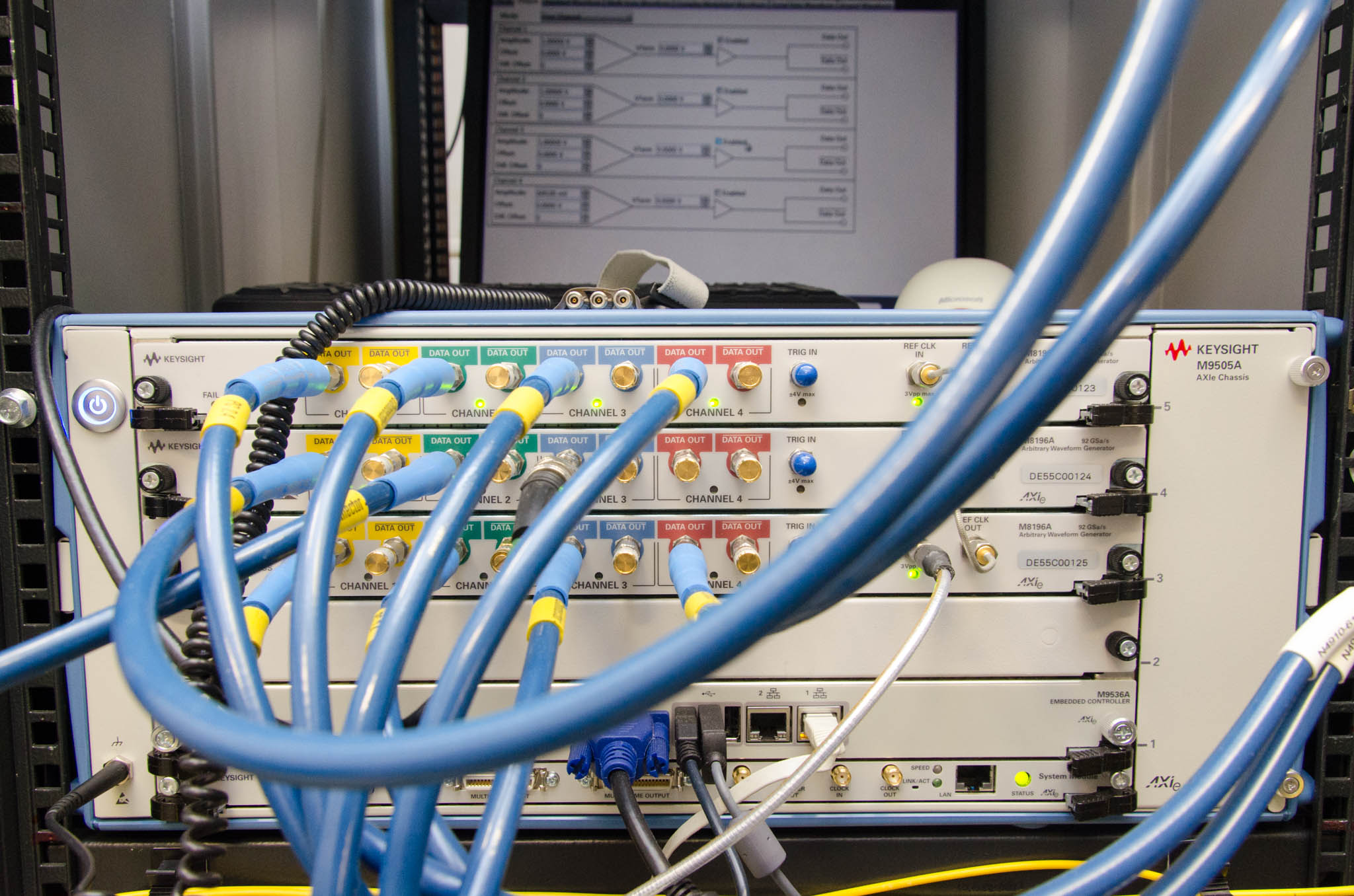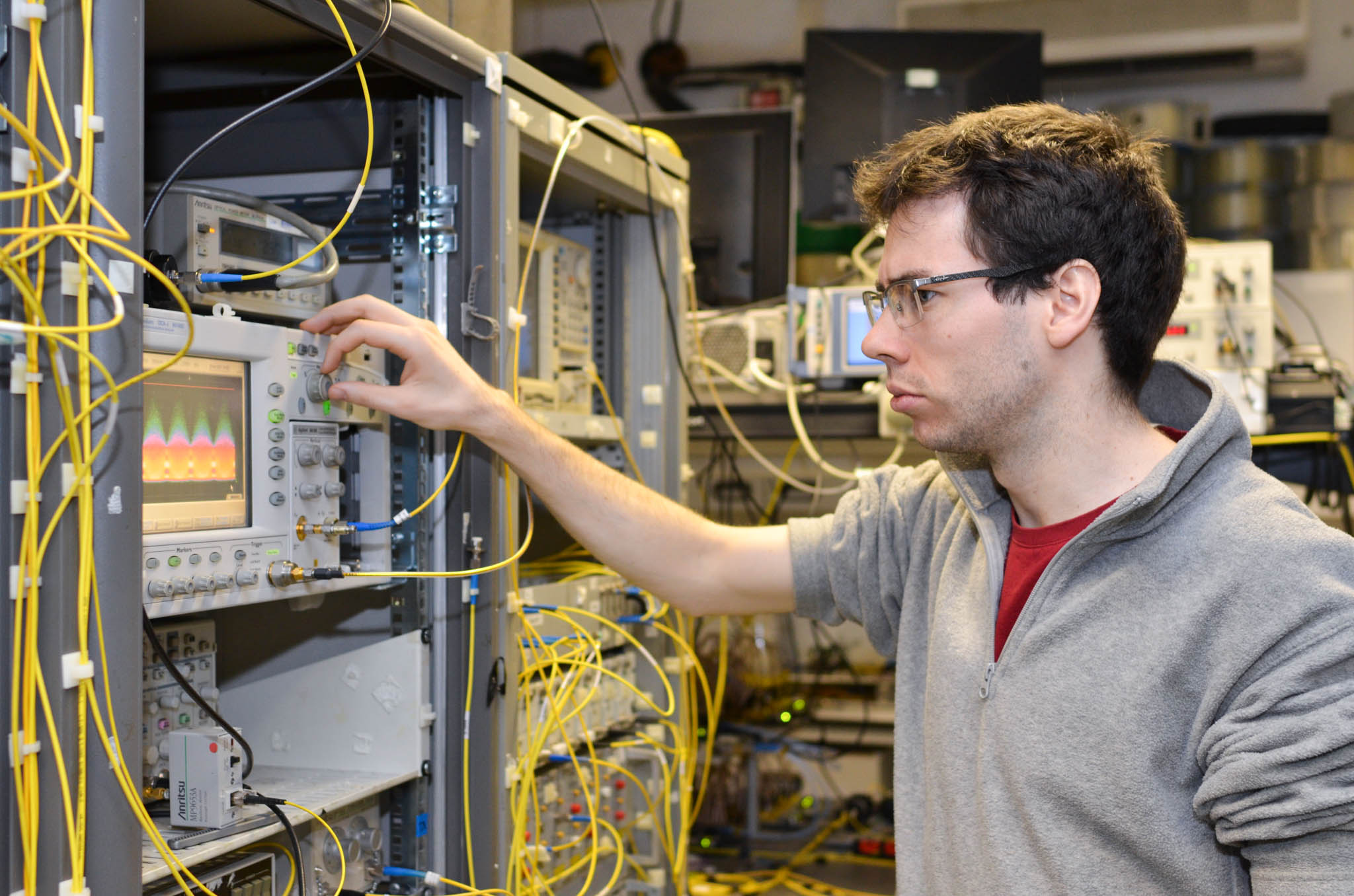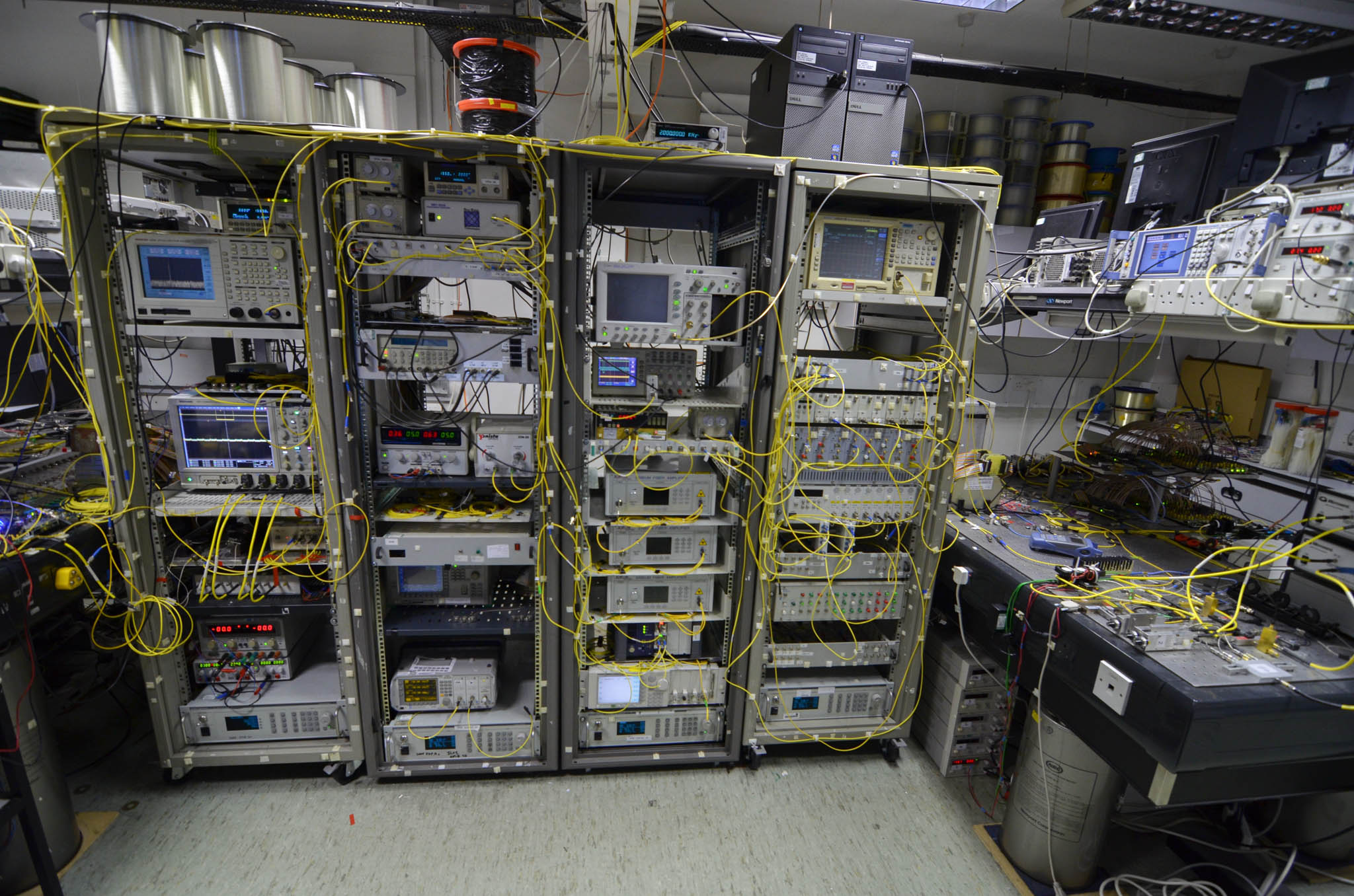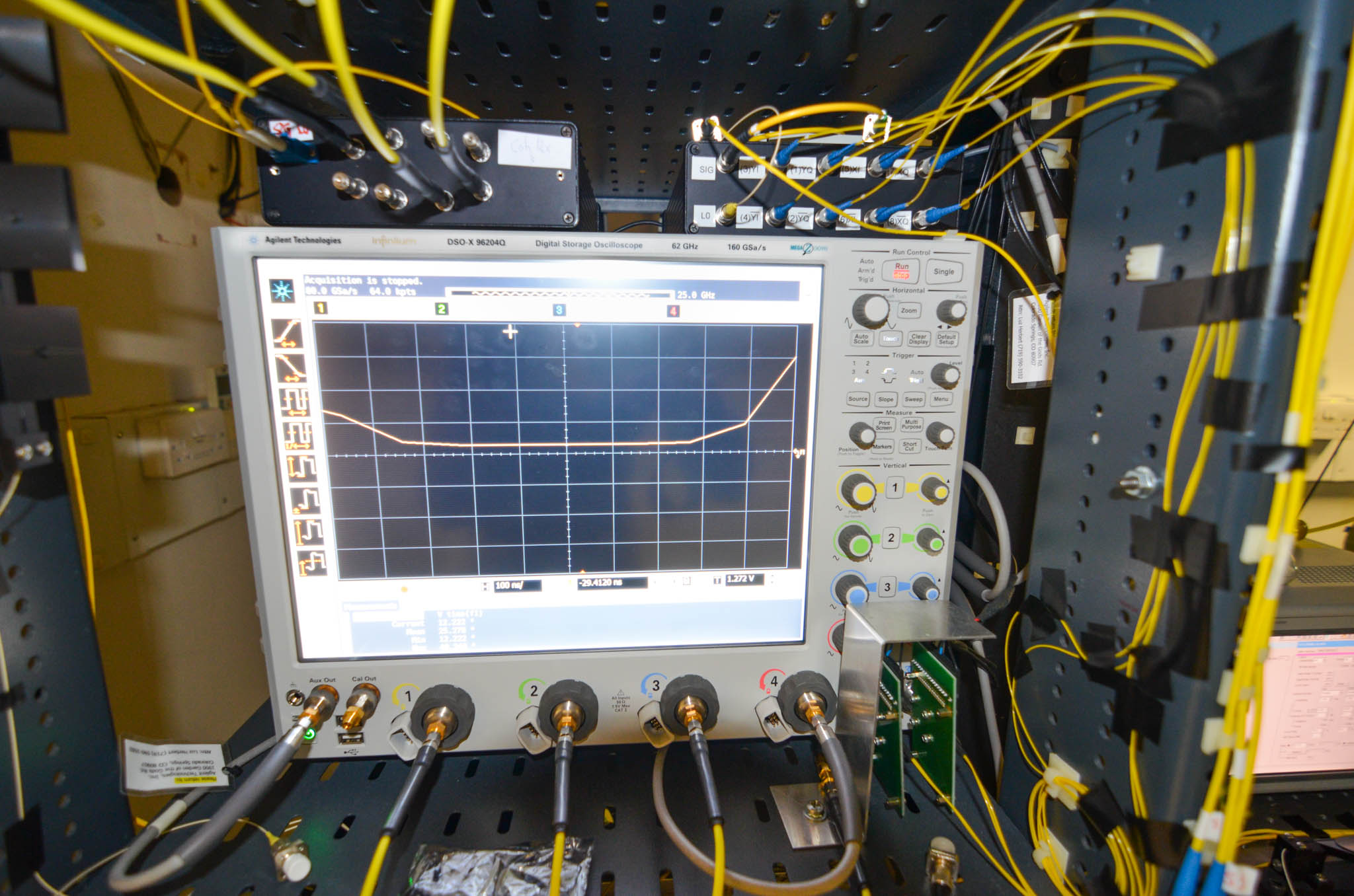Facilities
The world leading laboratory facilities and experimental capabilities of the Optical Networks Group (ONG) at UCL provide the core test-bed infrastructure of the UNLOC project. Combined with the complementing facilities at Aston Institute of Photonic Technologies, UNLOC has one of the best-equipped university-based optical communications laboratories in the world.
The lab is based around an optical fibre recirculating loop and a comprehensive signal generation and detection capability. This allows the characterisation of system performance for wavelength division multiplexed (WDM) systems with advanced modulation formats in conjunction with coherent detection over transmission distances that can simulate real transoceanic scenarios.
Current state-of-the-art equipment in the ONG lab at UCL includes:
- 12x92 GSample/s 8-bit digital-to-analogue converters (DAC)
- 45 GHz bandwidth dual-polarisation four dimensional optical modulators
- Coherent receivers (max 70 GHz balanced photodetectors)
- 3x160 GSa/s digital storage oscilloscopes (63 GHz electrical/analog bandwidth)
- 16xECL lasers
- Spectrally shaped amplifier spontaneous emission noise (SS-ASE) to emulate full C-band transmission
- 3xHigh power (33 dBm output power) optical amplifiers (EDFAs)
- A recirculating optical loop with state-of-the-art optical fibres. These include Corning® SMF-28® ULL and Corning® Vascade® EX2000

The three synchronised Keysight M8196A 92 GSa/s 40 GHz bandwidth Arbitrary Waveform Generators constitute an important part of the transmitter system we use for our experiments.

Daniel, a PhD student currently working for the UNLOC programme, is setting up a digital oscilloscope for an experiment.

A view of the main rack including the fibre recirculating loop.
The lab equipment is used in flexible experimental configurations to perform a wide variety of standard and customized tests. We are currently exploiting:
- An FPGA/DAC- based ‘software-defined’ digital transmitter encoding up to 16 Nyquist-spaced optical carriers with advanced mQAM modulation formats up to 256QAM, including pulse shaping and/or pre-distortion. The generated transmission maximises spectral efficiency achieving bit rates of up to 1 Tbit/s
- 126 GHz (optical BW) coherent receiver with net bit rate of up to 1Tbit/s, matching our transmission capabilities. This coherent receiver allows us to investigate the performance of systems using multi-channel digital back propagation (MC-DBP). Our group recently showed that this nonlinearity compensation technique can double the distances for optical transmission (see Maher R et al., Scientific Reports, 2015)
- Unrepeatered transmission system which enables the investigation of the maximum single span length for unrepeatered systems (without optical amplification) using low loss pure silica core fibre and nonlinearity compensation. This system was used in a recent study to demonstrate record transmission distance and information rates (bits/s/hz) in unrepeatered systems (see Galdino L, et.al, Optics Letters, 40(13), 2015)



